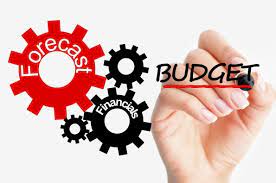 Creating a budget is vital for every business to grow and succeed. You might not know it but it can help you determine if you have enough cash to either generate income, expand your business or even further fund your business.
Creating a budget is vital for every business to grow and succeed. You might not know it but it can help you determine if you have enough cash to either generate income, expand your business or even further fund your business.
Companies without a budget can run the risk of running at a loss (spending more than they make) or spending little money to increase their business. So how can you then create a perfect business budget?
Let’s find out.
Check your Revenue
Before creating a budget, the first thing you should do as a business owner is to calculate revenue, including every income, such as investments or interest. Income is made after you subtract your expenses, while your revenue is the total money you make from your sales.
When your income sources are added together, you can find your monthly or yearly revenue. This makes your budgeting easier since you would be able to make plans depending on the situation.
Evaluate Your Fixed Costs
Your next step in creating your budget is to know your fixed costs. Fixed costs do not change irrespective of your production or sales volume. They include office supplies, bank fees, utilities, insurance, employee benefits, office space rental, salaries, property tax, and others.
Evaluate Your Variable Costs
Variable costs are expenses that usually change based on your production output. As your company expands, your costs will also increase, and with increased production, the cost rises. Variable expenses include direct labor costs, sales commissions, and raw materials. Your variable costs and fixed costs should be subtracted from your revenue.
What you end up with will be your profit. Your profits are your total expenses minus total revenue. For instance, if you made an estimated sum of $200,000 in sales with a total expenditure of $110,000, you would be left with a profit of $90,000, which is a 45% profit margin.
Add Unexpected and One-time Costs
Another critical aspect of a good budget is to include unexpected or one-time costs since they haven’t occurred. The aim is to plan for safety in case something happens unexpectedly. For example, your equipment could malfunction and need to be repaired or even replaced. Or it would be best if you got a tool for your work, these are unexpected costs.
You could budget in advance for a once-a-per-year firmware upgrade for one-time costs. But, of course, when you plan for such expenses in advance, you plan for money to be available.
Calculate your Tax Estimates
An essential aspect of having a budget is its tax estimate. Some people don’t know that their company’s budget should include an amount for tax estimates. This way, you know how much you are parting with and making as your revenue. How is this done?
Your expected amount to make from the sales of services and goods is your estimated revenue. This is after you have removed your tax. It is everything you gain, irrespective of the amount you spend to get there.
However, it can be pretty cumbersome to sort out corporate taxation yourself. So, it is advisable to get professionals offering tax services to help you out to avoid any penalties or mistakes in your budget. Preferably choose one that has a high rating for managing businesses and company’s budget successfully.
Ensure Your Estimates are Conservative
When you make budgets, you should overestimate your expenses and underestimate your revenue. Forecast correctly. Your estimates shouldn’t be based on historical data alone. You can also use sales plans.
Periodically Review your Business Budget
Most firms usually draft yearly budgets. But if you are just starting up or own a small company, you should review your budgets periodically. Sometimes, you can plan a month ahead since unexpected expenses can change your revenue estimation or plans fail through.
A good way to do this is to establish a budget calendar plan. This tool would help you with the right capital that would meet your company’s needs.
Ensure your budget figures or numbers are adjusted periodically. In instances where your revenue decreases or increases, this will better position you on how you can spend or allocate your money.
Determine Profits
After analyzing your unexpected or emergency funds, variable expenses, fixed costs, and income, it is time to put these numbers together. Of course, your business improves when your profits are growing. In such cases, your next job would be to find ways to use these profits to expand your company.
An excellent way to do this is to reinvest into your business. Putting back profits into your company would make it grow and scale.
If your numbers do not turn out positively, your business budget will help in adjusting it, especially if you just started your business. You can make adjustments when your estimated revenue is smaller than your expenses. Even if your profit is small since you have just started, you would not have to worry since you have plans for that.
Create an Income Statement
An income statement often called a profit and loss statement, summarizes your expenses and revenue for a particular time. For example, it could be monthly, quarterly, or annually. This shows your financial performance and your business profitability.
An income statement would show you positive numbers (you spent less and brought in more). But, every month would always not bring profit, especially in your business’s infancy.
Bring it All Together
Lastly, when you have gathered your business’s expense and income information, it is then time to create a budget that considers your business’s future. Your budget should balance your business’s total expenses and total income.
This is done by adding every cost together (one-time, variable, and fixed costs). You would then be able to know if your business made profits.
That’s a Wrap
With budgeting, you would be able to know the right processes that can help you match your present and future expenses and revenue. You should also ensure that you have available funds that can help keep your business running, compete with competitors, grow your business, and have an emergency fund.




No Comments